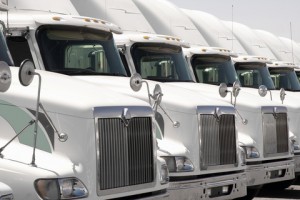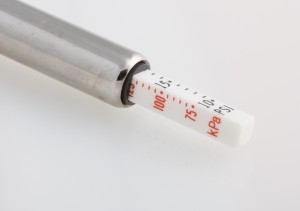Managed fleets come in all sizes, and are found in a variety of industries, but do have at least one thing in common: they use a lot of fuel. With gas prices on the rise, keeping control of those costs can be difficult. However, increasing a vehicle’s fuel economy by just 1 mile per gallon can save a 300-vehicle fleet over $50,000 in one year. Fleet managers can easily reign in fuel costs for their fleets and their companies by improving fuel efficiency.
One of the best ways to improve fuel efficiency is with nitrogen tire inflation because nitrogen in tires makes it easier to achieve the most important factor to improving fuel efficiency and increasing tire life: proper tire pressure. By itself, proper tire pressure increases fuel efficiency between three and six percent. If the vehicle already gets 34 miles to the gallon, then a three percent increase in fuel efficiency will achieve that 1 mile per gallon increase that needed to see savings. If the vehicle gets 25 miles to the gallon, then a four percent increase is what needed to achieve that one mile per gallon. Since nitrogen tire inflation maintains proper tire pressure for a longer period of time, those savings are more easily achieved and kept.
According to the Tire Retread Bureau, the biggest issues affecting the bottom line of fleet managers, after fuel costs, are tire maintenance/safety and replacement/tire wear. Nitrogen tire inflation targets those issues as well as the fuel economy because proper tire pressure increases tire life as well as the fuel economy. This leads to even more savings for managed fleets, as they can not only cut fuels costs but cut tire maintenance and replacement costs as well. According to the Technology & Maintenance Council, 10 percent under inflation will shorten tread life anywhere between nine and 16 percent. Under inflation shortens tread life because driving on these tires causes sidewall flexing, which creates irregular tire wear and extra heat build-up within the tire, reducing retreadability and safety while using more energy and fuel. With an average tire press of $250, under inflation will cost a managed fleet an extra $25 per tire. Proper tire pressure with nitrogen tire inflation will reduce those maintenance costs while making the vehicles safer for your drivers.
Nitrogen tire inflation is a win-win for managed fleets both large and small, and in all sorts of industries. It’s been used by the airline industry, NASCAR, and the military for years, so nitrogen must be doing something right for them. If improving fuel economy or cutting operational costs are what you’re after as a fleet manager, then why not see if nitrogen tire inflation can do something right for your managed fleet?







